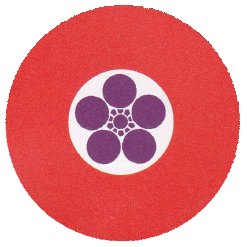|
History of Japanese Jiu Jitsu
| Jiu Jitsu, or Ju Jitsu, is a term that describes the Martial Art of using an opponent's strength against them. This involves throwing, locking and choking as well as general grappling techniques. The Art itself is practiced in a number of different ways, ranging from the competitive and ground-based Brazillian Jiu Jitsu, to the sport-orientated Judo. Although Jiu Jitsu can be found in a number of modern-day Martial Arts, its roots can be traced back to a single culture and a single source. |
The Samurai Fighting Style
| The term, Samurai, refers to the Japanese
warriors of pre-industrial Japan. Their main weapon was, as popularized
in films and books, the Katana. Despite their focus being placed upon
sword skills, the Samurai did not neglect emtpy-handed fighting styles.
As such, Jiu Jitsu developed as a set of techniques designed to deal
with armed and shielded opponents on the battlefield. Many Jiu Jitsu
techniques are reminiscent of sword attacks, which correlates with
the main skills of the warriors that developed this hybrid Martial
Art. Although many fighting styles stress the importance of striking at the enemy, this would be ineffective against those wearing armor. Because of that, Jiu Jitsu's focus became throwing opponents to the ground, using locks to disable limbs and pressure points to inflict as much harm as possible. |
Jiu Jitsu becomes Judo & Brazilian Jiu Jitsu
| When the Samurai class were no longer required, their
Martial Art began to trickle down into other classes and knowledge
that was once restricted became more available. As years past, these
techniques would find their way into no-holds barred fighting tournaments
as well as being taught on a more national level. This would be the
case until the explosion of Judo. In the early 1880s, Jigoro Kano began to adapt the techniques of Jiu Jitsu so that they could be taught and trained without so much harm being done to the participants. He called his new form, Judo. This Martial Art became hugely popular, so much so that it grew to be larger than Jiu Jitsu, pushing the more violent system into the background. Judo would then spread around the world, eventually making its way to Brazil. Depending on the teacher, Judo was either more or less like Jiu Jitsu. The Judo that was taught in Brazil eventually became Brazillian Jiu Jitsu. |
Modern Day Self Defense and Development
| Today, Jiu Jitsu is a far less popular Martial Art
than Arts such as Karate, Tae Kwon Do and Judo. The reasons for this
are debatable, but the existence of Japanese Jiu Jitsu has now evolved
into something different. Instead of a competitive or sporting context,
Jiu Jitsu's focus has settled upon self-defense. Throwing, locking
and pressure point techniques are useful for street defense and excellent
for those that cannot rely on their strength to defend themselves.
The quality of instruction can vary greatly, as there is no central organization that handles the administration of Jiu Jitsu on a global level. Also, unlike arts such as Aikido or Judo, there is no figurehead for the style, no guiding light. Instead, schools make their own adjustments, focusing on the elements they find more important or appealing. |


